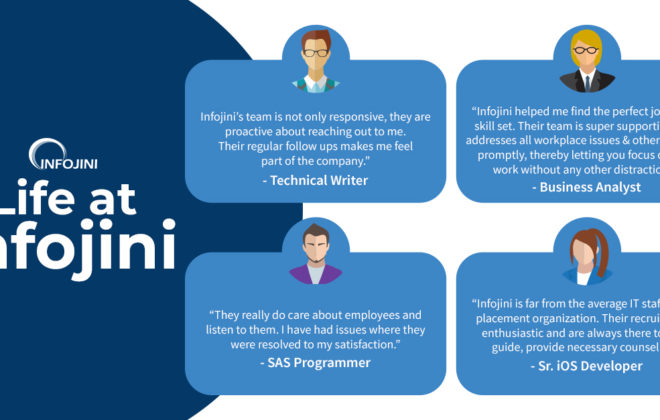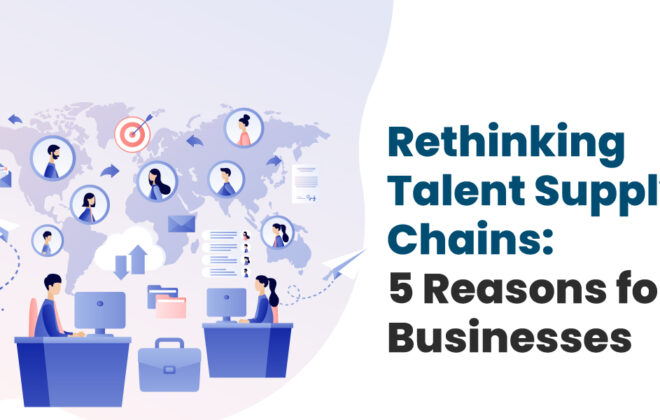Returnship: Follow These 5 Tips to Create a Promising Re-Entry Program
Taking a career break is no longer a taboo. Today, an increasing number of companies are widening their lenses while evaluating a candidate based on their career breaks. In place of sliding away their applications, now companies are giving due attention to these candidates. As a result, they are increasingly accepting career breaks as a norm.
For instance, IBM broke the hiring glass ceiling by recruiting Jill Burns through their tech re-entry program, after her 10-year long break. They gave her all the required resources and support to integrate back into the current workforce and proved that a career break can no longer be put forth as an excuse to impede anyone’s career growth.
Moreover, returnship program is not only about allowing returning people into the workforce. It is also about maximizing an organization’s potential by recruiting qualified and talented individuals. A win-win platform for both.
However, when companies were asked about their returnship program, 41% said they haven’t even evaluated this option. Startling as it seems, it’s not a new revelation. Shattering the career break stereotype will take its due time and in the meanwhile, new companies will start evaluating returnship programs as a promising option. If you also lie in the above 41% bracket, it’s high time to start considering and building a returnship program for your organization.
![]()
What is a Returnship Program?
It is a paid internship program designed for people who aspire to rejoin the workforce after a career break. Some of the major responsibilities of a returnship program are to,
- Provide project and work training
- Polish existing skills
- Reacquaint with ongoing trends and practices
- Bridge the knowledge gap as per the work requirements
- Provide mentorship
Typically, these programs last from a few weeks to months depending on the skill and industry. Based on skill assessment, organizations further absorb these candidates into their workforce. On average, companies hire 75% of these candidates at the end of the returnship programs.
![]()
Tips to Build a Returnship Program
1. Function in Small Cohorts
Cramming 40-50 people in a room is not the best option in a returnship program. Volunteers in these programs demand individual attention and therefore, an ideal approach is to function in small cohorts of 10-15 to ensure the purpose of the program is achieved. Small groups also instill confidence in the members to raise their hands and ask questions which in larger groups is a dreadful task.
2. Reacquaint Candidates with Current & Future Trends
Chances are candidates in your program might feel outdated with the current work and tech trends. Therefore, you must brush their existing knowledge with the prevalent trends and help them understand what the future holds. Also, introduce new fields of growth that might eclipse the existing trends in the future. Candidates can draw on this knowledge to pick a new skill or change their existing working area to remain relevant to future trends.
3. Pair Candidates with Mentors
Allot a dedicated mentor to every individual.
Mentors help seamlessly navigate the workplace and get to the speed by providing on-ground help in understanding and implementing the work. Apart from skill training, they also acquaint candidates with ongoing guidelines, culture, and practices. This one-on-one assistance greatly streamlines the transition process for the returning workers.
4. Partner with Academic Institutes
Apart from on-the-job training, returnship programs provide candidates additional training to mend the confidence gap that might affect their performance. You can partner with institutes that master these skills to train the candidates better for the job.
These additional training come quite handy when the job demands candidates to remain on client calls or have frequent communication with internal and external teams. Public speaking, personality development, call handling, language training, or MS office expertise – are few of the skills that will underpin the candidate’s performance in their jobs.
Read More: How to Create a Robust Upskilling Strategy in 5 Easy Steps?
5. Inspire Members with Network
When Jill Burns, an IBM returnship program volunteer, was asked about the most valuable benefit of her re-entry program, she replied “time spent in networking”.
Networking inspires people to go beyond their capabilities and gives them the zeal to tackle such career breaks head-on. It allows people to bond with others with the same experiences and become part of a larger journey. Returning workforce will feel accepted as well as motivated to leap their career journeys when they are actively participating in meetings, discussions, and networking. Connecting with people who have the same career journey is a great catalyst in addressing the inhibitions of the returning workforce.
Therefore, you must ensure to facilitate networking events as part of your returnship program where volunteers of the last batches or people with returnship experience can voice their stories to motivate and inspire the new returning cohort.
Hewlett Packard Enterprise, Cloudflare, UniversalGiving, Goldman Sachs, Cedars-Sinai Hospital, Credit Suisse, IBM, Accenture, and GTB are few of the big names currently leading the running returnship program arena.
![]()
Summing It Up
Today, tapping into the quality talent is of paramount importance. Ticking off biases one by one, companies are marching forward to show that people are at the heart of their business and they are ready to challenge the status quo to ensure more and more quality hires get the opportunity they deserve. And returnship program is one such solution to ensure no talent is left untapped.
Related Posts
Subscribe For Updates
Categories
- Accountant
- AI
- Automation
- Awards and Recognitions
- Blue Collar Staffing
- Burnouts
- Campus Recruiting
- Cloud
- Co-Ops agreements
- Company Culture
- Compliance
- contingent workforce
- Contingent Workforce
- COVID-19
- Cyber Security Staffing
- Data Strategy
- Digital Transformation
- direct sourcing
- Distributed Workforce
- Diversity
- Diversity & Inclusion
- Economy
- Events & Conferences
- fleet industry
- Gig Economy
- Girls in Tech
- Global Talent Research and Staffing
- Government
- Healthcare
- Healthcare Staffing
- Hiring Process
- Hiring Trends
- Home Helathcare
- HR
- HR Practices
- HR Tech
- IT
- Labor Shortages
- Life Science
- Local Governments
- News
- Nursing
- Payroll Staffing
- Public Sectors
- Recruiting
- Remote Work
- Skill Gap
- SMB Hiring
- Snowflake
- Staffing
- Staffing Augmentation
- Staffing Challenges
- Talent ROI
- Tech Staffing
- Technology
- Tips & tricks
- Total Talent Management
- UI/UX Design
- Uncategorized
- Veteran Staffing
- Veterans Hiring
- Veterans Hiring
- Workforce Management
Recent Posts
- Automation in Recruiting: From Chatbots to Predictive Screening
- Gig Economy Expansion: The Impact on Talent Pools and Business Models
- Skills-Based Hiring: Why Credentials Alone Don’t Cut It in 2025
- Procurement 3.0: AI & Intelligent Automation in 2025
- Q3 Is Here: Is Your Contingent Workforce Strategy Falling Behind?
Newsletter
Archive
- September 2025
- August 2025
- June 2025
- April 2025
- March 2025
- December 2024
- November 2024
- October 2024
- September 2024
- August 2024
- July 2024
- June 2024
- May 2024
- April 2024
- March 2024
- February 2024
- January 2024
- December 2023
- November 2023
- October 2023
- September 2023
- August 2023
- July 2023
- June 2023
- May 2023
- April 2023
- March 2023
- February 2023
- December 2022
- November 2022
- October 2022
- September 2022
- August 2022
- July 2022
- June 2022
- November 2021
- October 2021
- September 2021
- August 2021
- July 2021
- June 2021
- May 2021
- April 2021
- March 2021
- February 2021
- January 2021
- December 2020
- November 2020
- October 2020
- September 2020
- August 2020
- July 2020
- June 2020
- May 2020
- April 2020
- March 2020
- February 2020
- January 2020
- December 2019
- November 2019
- October 2019
- September 2019
- August 2019
- July 2019
- June 2019
- May 2019
- January 2019
- December 2018
- November 2018
- October 2018
- September 2018
- August 2018
- July 2018
- June 2018
- May 2018
- April 2018
- March 2018
- February 2018
- January 2018
- December 2017
- November 2017
- October 2017
- September 2017
- August 2017
- July 2017
- June 2017
- May 2017
- November 2016
- October 2016




